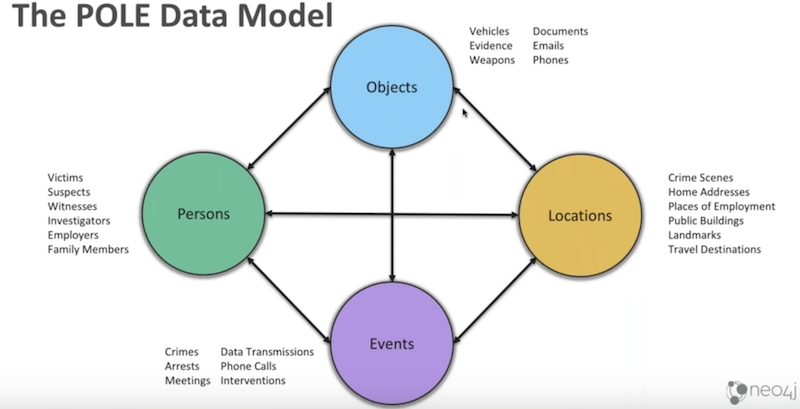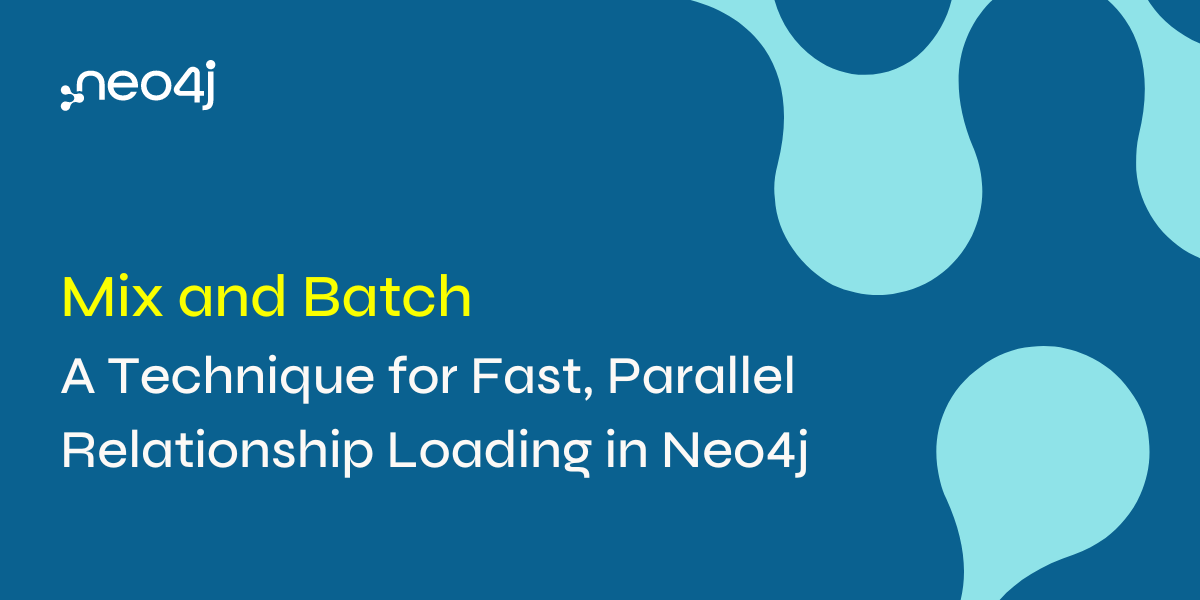Graph Technology Is in the POLE Position to Help Law Enforcement [Video]

Senior Pre-Sales Consultant, Neo4j
3 min read

A great graph database use case that is starting to emerge is the use of graph technology as a way to better support the police and other law enforcement officials, which also has applications for other security and investigative use cases like anti-terrorism, border control, and social services.
The main way practitioners are doing this is leveraging the POLE (Person, Object, Location, Event) data model for working with crime data.
It turns out that the POLE data model is a great fit for graph database technology and graph algorithms, and can be made even more useful by linking it to data visualization front-ends, including the Neo4j Browser and popular tools like Tableau.
A POLE + Graph Data Model Proof of Concept
To understand the potential of using graph technology for POLE investigations, you can explore the results of a proof of concept we produced using some publicly available datasets in this video:
The basic idea we tested out was whether authorities – not just the police, but also social services and other government agencies – could gain useful insights for investigations based on connections when it comes to navigating complex data.
The idea hinges on who knows who. If person X has come to the attention of the authorities for whatever reason, then who else in X’s network might be of interest?
In some cases, that “interest” could be that they are in relationships with people who have connections to other people with criminal records, for example. They could be an ex-offender who the authorities are worried could slip back into unhealthy relationship patterns; they might be family members that could be potentially drawn into trouble or placed at risk.
Graph Technology as a New Way to Help the Public
This kind of complexity is hard to capture and explore through conventional database technologies like an RDBMS, whereas graph databases excel at mining connected data.
We took a sample dataset of street-level crime in Greater Manchester for a certain month last year and cross-connected a number of other data sources, from geotagging data to addresses to randomly generated person information to see how deep a picture of these connections we could generate.
The results: We built a Neo4j graph database of 29,000 crimes in 15,000 locations, generating 106,000 relationships between the nodes.
Employing relationships like lives-with and party-to, we were able to find deep and complex networks of connections, obscure family relationships, social associations, and clusters of people and crimes that seemed suggestive. These insights could then be used to support ongoing criminal investigations or initiate new ones.
This exercise shows the scale of what graph technology brings to POLE investigations. What happens next will be down to the relevant authorities and agencies.
However, graph database software and crime data are potent combination to better protect the public, enabling data-driven investigations and decision making, and allowing police forces and law enforcement government agencies to intelligently maximize their resources in the face of budget constraints and an ever-evolving landscape of crime and other security threats.
Read this white paper – Fraud Detection: Discovering Connections with Graph Databases – to discover how Neo4j is used to proactively detect and prevent fraud across multiple use cases.







